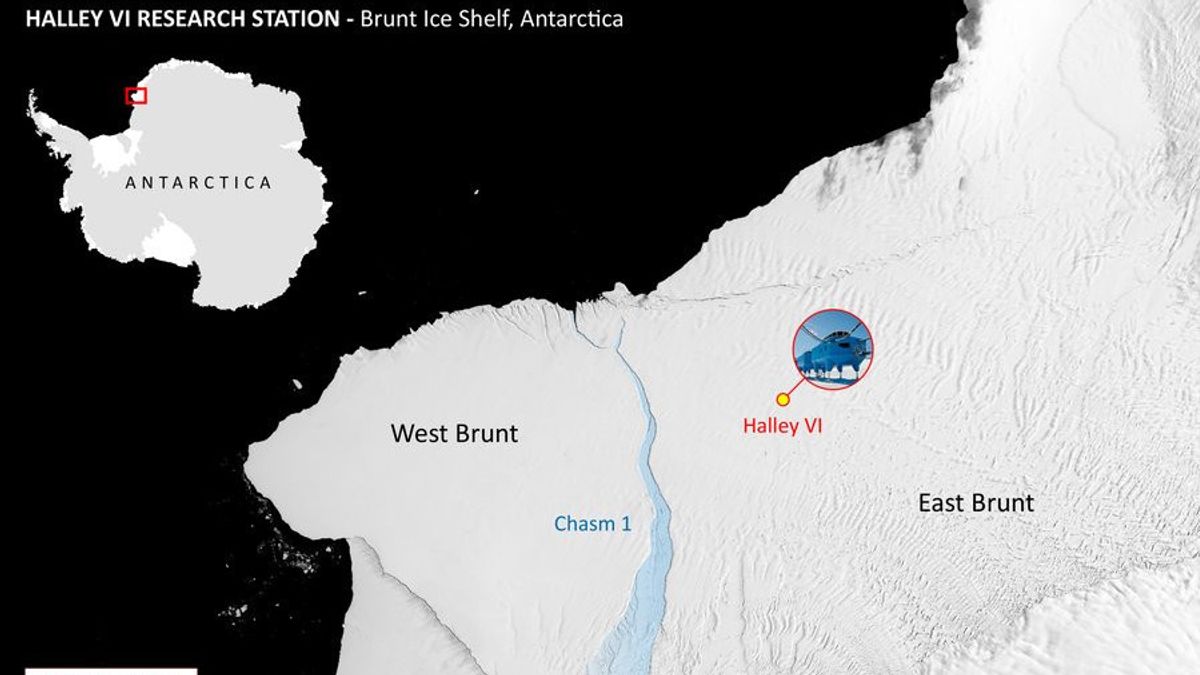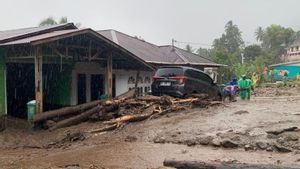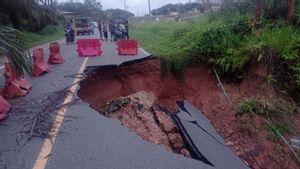JAKARTA - A satellite image shows an iceberg almost the size of the city of London, breaking off from the ice sheet in Antarctica.
According to data from the British Antarctic Survey (BAS) disclosed earlier this week, a 1,550 sq km block has been detached from the 150-meter-thick Brunt Ice Shelf.
Cracks, which have developed naturally over the last few years, extended across the ice sheet on Sunday, January 22. As a result, new icebergs are released in a process that has been dubbed birthing.
"The iceberg broke up when the rift known as Chasm-1 extended all the way through the ice shelf," BAS said.
This separation is the second major birth of the area in the last two years and comes a decade after scientists at BAS first detected the growth of large cracks in the ice.
Even so, BAS said, changes to the Brunt Ice Shelf are a natural process, with no evidence of climate change playing a significant role there.
A new iceberg the size of Greater London has calved from Antarctica's Brunt Ice Shelf.
Last night, the crack Chasm-1 fully extended through the 150m thick ice - a decade after BAS scientists first detected that cracks in the ice sheet were growing.
1/2 pic.twitter.com/68f0scdPAi
— British Antarctic Survey (@BAS_News) January 23, 2023
This is not the first time, in 2021 an iceberg (now known as A74) broke up and has since drifted off the Brunt Ice Shelf into the Weddell sea.
The new iceberg formed along the lines of Chasm-1 is slightly larger than A74. It is expected to follow the A74's course in the Antarctic Coastal Current while BAS glaciologists will track its movement.
"Our glacier experts and operations team anticipated this event," said BAS Director Professor Dame Jane Francis.
To prepare for future birthing events, scientists measure the ice's surface and compare it with satellite images from ESA, NASA, and the German satellite TerraSAR-X.
"All data is sent back to Cambridge for analysis, so we know what happens even in the Antarctic winter, when there are no staff on station, it's dark for 24 hours and temperatures drop below minus 50 degrees C (or -58F)," he explained. Professor Francis.
Antarctica has experienced an extensive roller-coaster of sea ice over the past decades, swinging wildly from record highs to record lows. Unlike the Arctic, where scientists say climate change is accelerating its impact, the extent of Antarctic sea ice varies widely.
The Brunt Ice Shelf is probably the most closely monitored ice shelf on Earth. A network of 16 GPS instruments measures ice deformation and reports back hourly.
SEE ALSO:
European Space Agency TerraSAR-X satellite imagery, Nasa Worldview satellite imagery, US Landsat 8 imagery, ground penetrating radar and on-site drone footage are critical in providing the basis for early warning of changes to the Brunt Ice Shelf.
This data has given scientists a number of ways to measure cracks with extremely high precision. In addition, they also used computer models to predict how close the ice shelf will be to calving.
As information quoted from Metro, the Brunt Ice Shelf also houses BAS's Halley Research Station. However, the location of the research station had not been affected by the recent childbirth.
However, the structure of the Brunt Ice Shelf is complicated, and the impact of spawning events is unpredictable. Looking at 2016, BAS is cautious about relocating Halley Research Station 23 km inland, after Chasm-1 began to expand.
As of 2017, the staff is on station only during the Antarctic summer (between November and March). Currently, 21 staff are on the station to maintain the power supply and facilities that allow scientific experiments to operate remotely during winter. Their work will continue until they are collected by plane around February 6.
The English, Chinese, Japanese, Arabic, and French versions are automatically generated by the AI. So there may still be inaccuracies in translating, please always see Indonesian as our main language. (system supported by DigitalSiber.id)


















